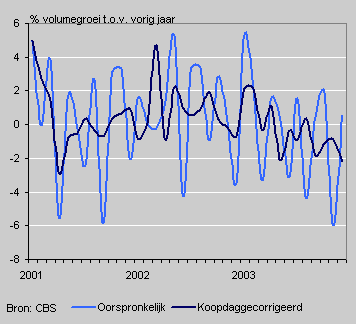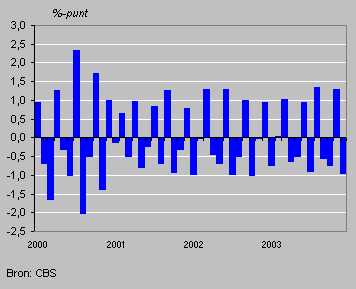Shopping days affect consumption

According to a shopping day survey held by Statistics Netherlands, consumers spend most money on Fridays and Saturdays.
The survey was carried out to gain a better insight into the changing shopping behaviour of consumers in order to be able to interpret the monthly consumption figures better. The new figures reflect monthly spending by consumers corrected for shopping day effects.
Fridays busiest for supermarkets
The survey further showed that spending on food, drink and tobacco was highest on Fridays, followed by Saturdays. Together, Fridays and Saturdays account for around half of spending on this category.
Household consumption of food, drink and tobacco

Correction for shopping day effects
After correction for the effects of different shopping day patterns between the months, the monthly series of year-on-year figures becomes smoother. This makes it easier to identify any changes in consumer shopping patterns. The effect of more or fewer shopping days has only a very small effect on domestic consumption in the quarterly and annual figures.
Shopping day effects on the volume growth of domestic consumption

Leap year
As 2004 is a leap year, the shopping day pattern shifts by two days instead of one. This may result in a stronger shopping day effect if this year a month has two days on which consumers spend a lot of money, instead of two days last year when they spent less. This effect is apparent from the average monthly shopping day correction on the domestic consumption per year.
In a non-leap year the average absolute shopping day correction is around 0.75 of a percent point. In a leap year it is around 1.25 percent points. The largest corrections in 2004 will be in May (an extra Sunday and Monday instead of Thursday and Friday) and August (an extra Monday and Tuesday instead of Friday and Saturday).
Bastiaan Rooijakkers